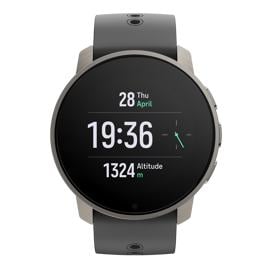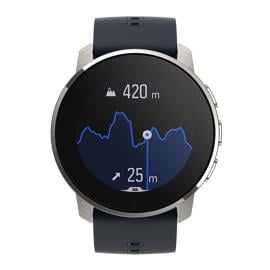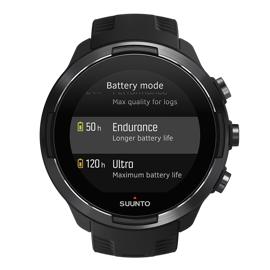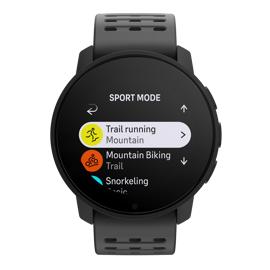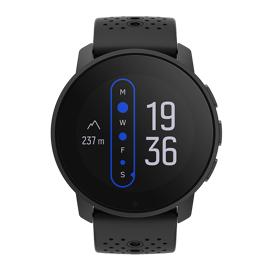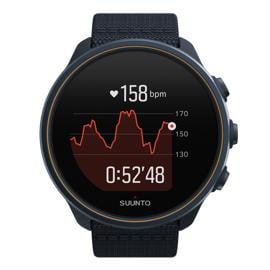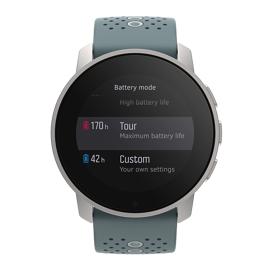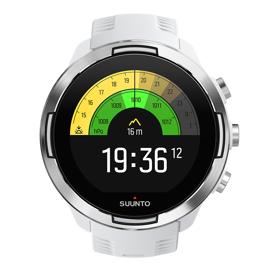Bicycle sports, including bikepacking, have boomed since the beginning of the COVID-19 pandemic. With travel abroad mostly out of the question we’ve taken to exploring our own backyards. The urge to discover new territory cannot be quenched!
Bikepacking is the equivalent of backpacking only done on two wheels rather than two feet. It allows you to cover far greater distances in less time than ever possible with hiking. What’s not to like? Yes, flat tires suck. But master tire repair and the world is yours!
Maybe you’re considering buying a new bike so you can go on awesome multi-day bikepacking adventures. If yes, this article is for you. We talked to Suunto ambassadors Sami Sauri and Anton Krupicka – both seasoned bikepacking aficionados – and found out the essential things you need to know.
“I prefer to think of it as ‘bike camping’,” ultra runner, bikepacker and climber Anton Krupicka says. “You carry everything you need on your bike for one night or several nights of sleeping outside and riding your bike during the day. I love it for the same reasons I like doing anything outside – moving my body, and experiencing my natural surroundings.”
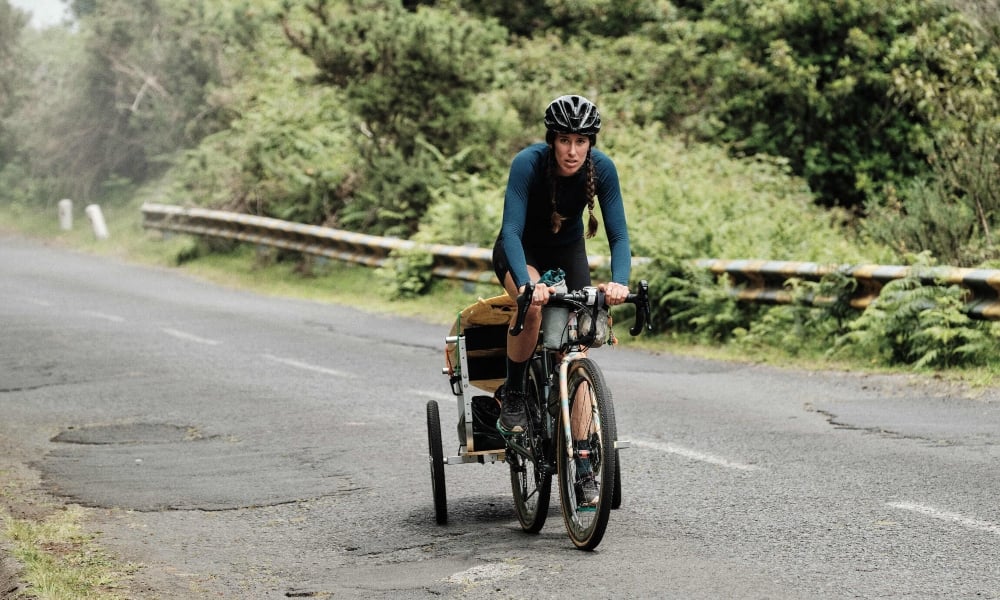
Sami's ongoing Into the Atlantic Islands project mixes bikepacking and surfing. © Sergio Villalba
Bikepacking vs. bicycle touring
Before we jump in, let’s look at the difference between bikepacking and biketouring. Bikepacking really became a thing just over a decade ago. It’s the young buck in the world of bicycle sports. Both involve travelling with bags on a bike. So what’s the difference?
In a nutshell, touring bikes are heavier, more robust, and designed for carrying heavier loads and for travelling further and primarily on paved surfaces (but not always). Think of it more as tourism by bike.
Bikepacking, on the other hand, synthesizes mountain biking and minimalist camping; it's the bike form of distance hiking or trekking. Bikepacking bikes are generally lighter, and designed for off-road excursions. The bags are usually smaller and more aerodynamic. It's more about outdoor advneture than tourism.
“The road is a comfortable place,” Spanish bikepacker and surfer Sami Sauri says. “It gets you to your destination faster and is easier, but the off paved or gravel roads are what I’m always searching for and trying to ride.”
Consider which – bike touring or bikepacking – is what you really want to do. Do you want to go travelling by bike, or do you want to get out in the hills and ride?
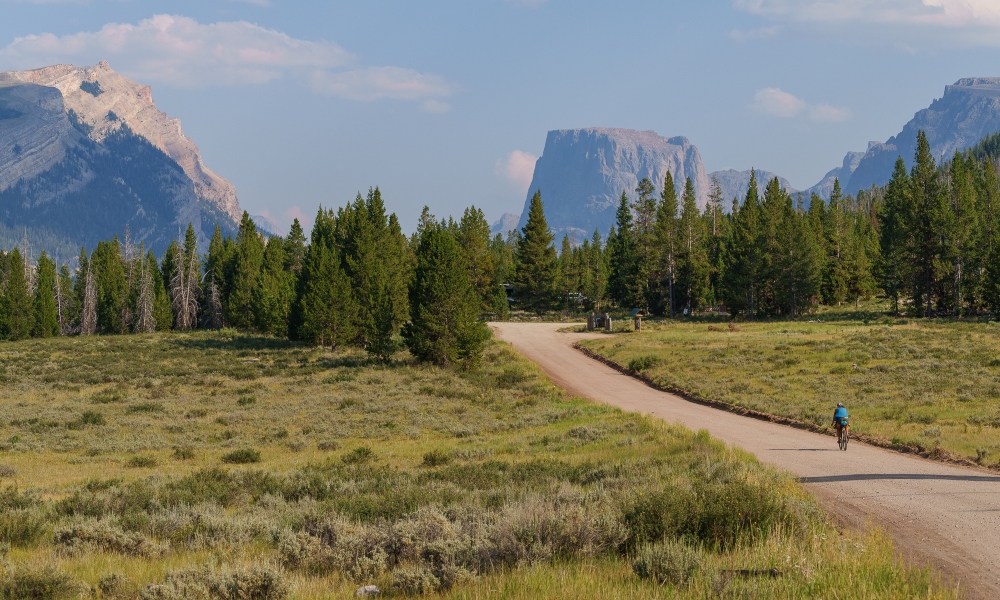
Anton is always devising epic bikepacking adventures. © Fred Marmsater
Test the water first
Before you pillage your savings, and impulsively click buy on a fancy five grand bike, take a breath, step back, and look at what you really need. “The best bike is the one you already have,” Anton says.
If you already have a mountain or trekking bike, Anton advises testing the water with that before making a big financial commitment. Rather than buying pricey bike bags, do a few overnight trips with your gear in your backpack, and see if it really is your cup of tea.
“For your first trip, it’s possible to strap simple stuff sacks to your handlebars and saddle and then perhaps carry the rest of what you need in a backpack,” Anton says.
Don’t break the bank, but choose quality
“I don’t think bikepacking HAS to cost a lot of money, but it does require a bike and some basic camping gear, such as a sleeping bag and mattress. In order to save money, the main thing you can compromise on is bikepacking bags,” Anton says.
Sami acknowledges a complete bikepacking setup isn’t cheap. Which is why she recommends investing in good quality gear. “If you buy good equipment you can have that for life,” she says. “The equipment you are going to use will probably be tested in harsh conditions so it’s better to buy good gear that can survive it and last longer than cheaper gear that will only work twice.”
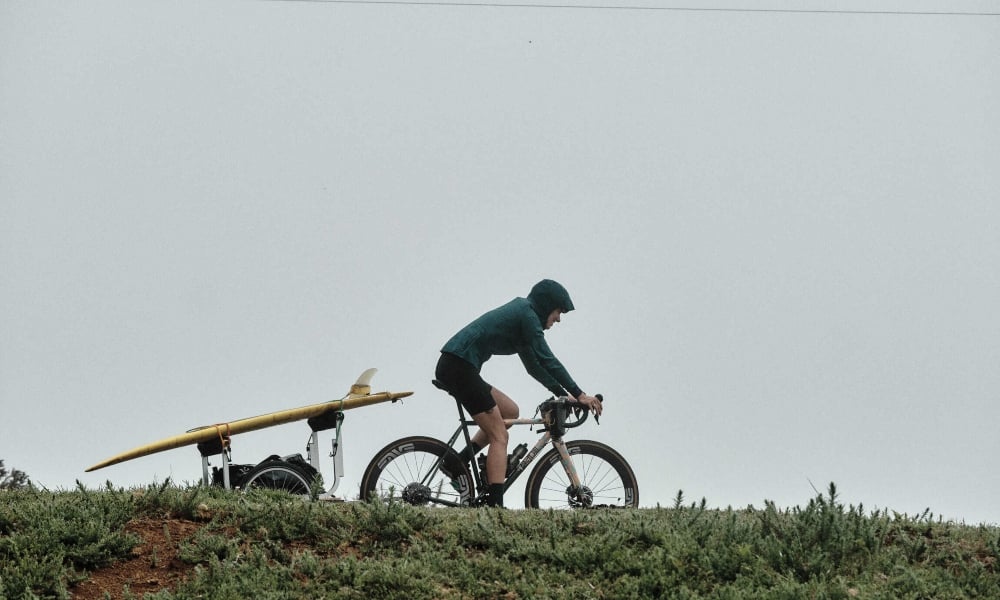
Sami cycled and surfed Madeira Island, the first destination in her island hopping adventure. ©Sergio Villalba
What bike is best?
For beginners, Anton and Sami recommend choosing an allrounder. “I recommend a comfortable bike, suitable for all terrains and that allows you to put on nice and strong tires, a good saddle and a comfy handlebar,” Sami says. “Before doing a long bikepacking trip make sure to do a proper bike fit so you avoid injuries”
Anton recommends looking for a good deal on a gravel bike. “Right now the bike industry is in a bit of a renaissance where it is prioritizing very capable all-around bikes,” he says. “These are often referred to as ‘gravel bikes’, though that is a very broad categorization. Generally speaking, these bikes retain the efficiency of road bikes with drop handlebars while also having the ability to fit larger tires – say, 40-55mm – which increases their comfort and capability as off-pavement vehicles. I believe an all-around bike like this is the best bike for a beginner, because it is so versatile. But, again, if you already own a bike, you can probably make it work. Just fit it with the biggest tires you can, and go!”
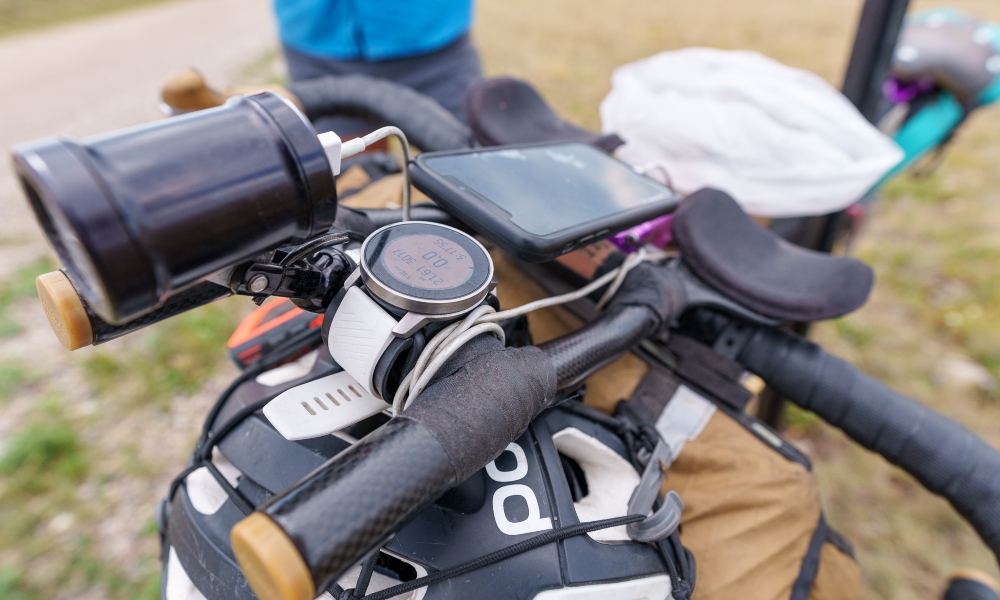
Sami and Anton keep their adventures on track with Suunto 9 GPS watches. © Fred Marmsater
What other gear do you need?
There is a long list of helpful gear you could take with you. Firstly, a good helmet is a must. Then you need to decide on whether you want clip in or platform pedals. If you haven’t used clip in pedals before it’s good to start gradually by testing them on easier rides first. They take some getting used to. Water bottle mounts and water bottles are also essential.
“Test everything you will wear before taking them on a big trip,” Sami says. “Don’t wear a brand new bib short, for example, but one you’ve tested on previous rides and you know is perfect for you. And it’s the same with shoes; get used to them properly before you do a long trip with them.”
“A basic repair kit for your bike is essential,” Anton says. “Spare tubes, a tube patch kit, a small pump, tire levers, and a small multi-tool (allen keys, etc) are the bare necessities.”
Anton and Sami both track their adventures with Suunto 9 sport watches, which offer 120 hours of battery life. Then they can look back and see where and how far they’ve been.
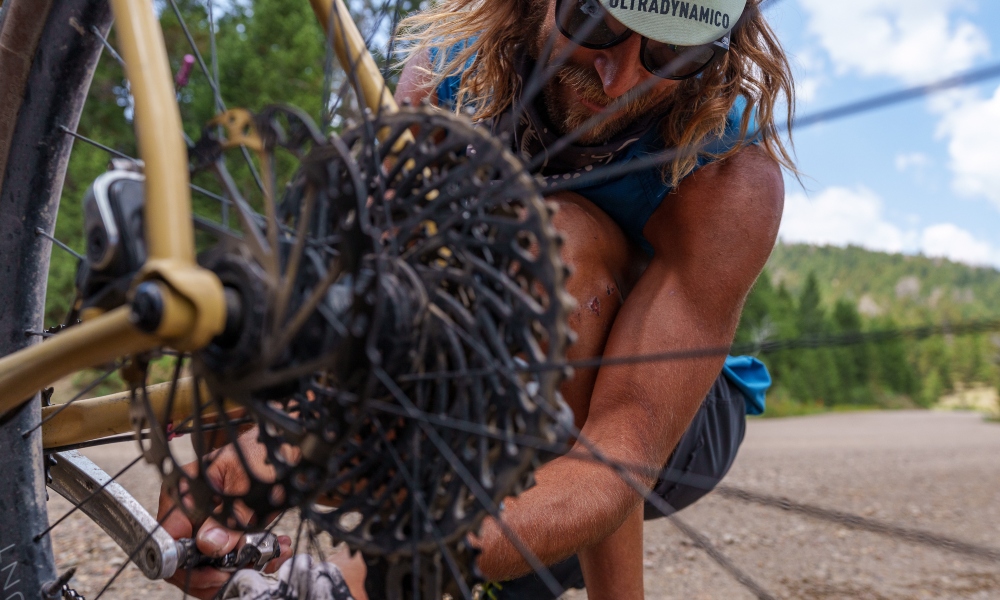
Knowing how to do basic bike repairs is essential for bikepacking adventures. © Fred Marmsater
Skills to master
As mentioned up top, knowing how to repair a flat tire is crucial. You don’t want to be out in the hills, miles from shelter, with a flat and have to walk with your bike. “You should be comfortable repairing a flat tire,” Anton says. “These can be common, and, obviously, they are show-stoppers if they happen and you don't know how to fix it.”
Another important skill Sami recommends is learning how to pack minimally. “I used to overpack, but now I am more careful and go minimalist.”
For your first trip
Anton recommends doing a simple overnight trip first. “On a weekend you can pedal out a few hours from your home – even just a few miles if you're lucky enough to live near public land – make camp, pack enough food for dinner and breakfast, and then ride home in the morning,” he says. “It gives you the feel of riding a loaded bike, eating and sleeping outside, and then riding again without too much commitment if something goes wrong.
“I think the main thing to avoid on a first trip is planning for too big of miles,” Anton continues. “The idea is just to test out your camping and riding systems, not necessarily to cover a bunch of miles. The best way to take the fun out of it is to ride too many miles on any given day.”
Sami also suggests making your first trip one in warm weather. “Because it allows you to carry less gear, maybe instead of a tent, a hammock,” she says. “Instead of a sleeping bag, just a liner. Try to avoid doing a big journey if it’s too hot or too cold. Keep it short and easy.”
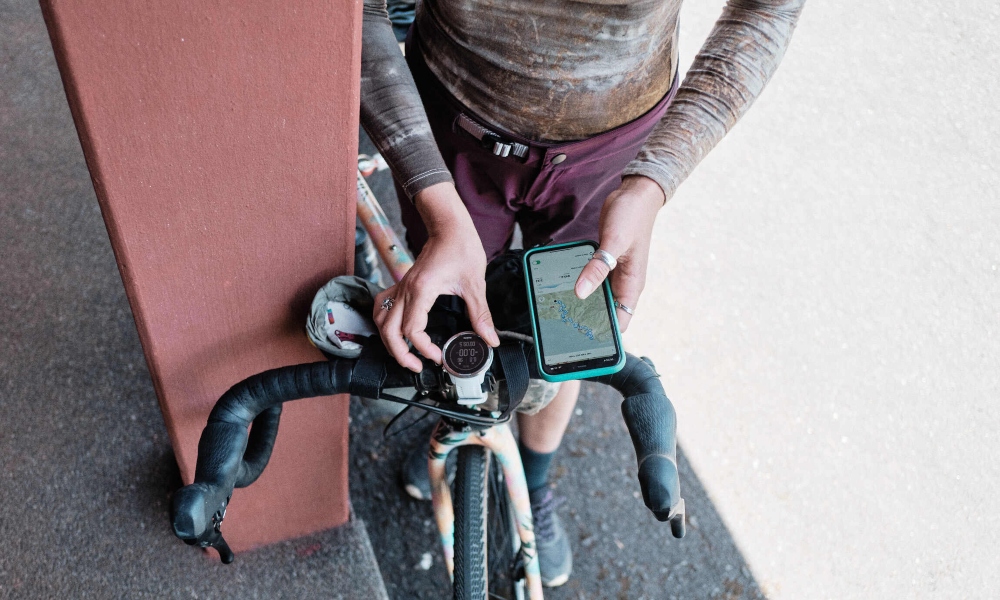
Use Suunto app and a Suunto 9 watch to guide you on the road. © Sergio Villalba
How to find cool routes?
To find awesome trails to ride, Sami uses the Komoot app. Another possibility is to use the heatmaps feature in Suunto app, and select the mountain bike overlay for awesome trails. Anton says www.bikepacking.com is an amazing resource.
“There are dozens and dozens of routes documented there that are almost all high quality and they range in length from a simple overnighter to thousands of miles,” he says. “However, my recommendation for a first trip would be to simply plan something for the nearest patch of public land –national forest – that allows camping, and plan a trip around that. Seek out the back roads – apps like Strava or RideWithGPS have heat maps that show you where people ride most commonly – and string them together in a logical way with convenient camp spots and/or resupply in surrounding towns.”
Tips for longer trips
Both Sami and Anton recommend doing a series of shorter trips before going on an epic one. “Start with shorter trips, testing and testing your set up, make sure you enjoy the journey and if you fall in love like I did, you’ll start doing multi day trips and then maybe weekly trips, and who knows, a month could be a thing too!”
Avoid these rookie mistakes
“Before you make a big investment in a brand new bike or expensive bags, just try out an overnighter with the gear that you already have,” Anton says. “I would say that in order to make sure you’re having fun as a beginner avoid doing too many miles and make sure you make camp early in the evening. It’s no fun setting up camp in the dark.”
Sami says another classic mistake is not checking the gear you’ll take works well beforehand, and then finding out deep in a trip it has issues. She also warns against overpacking, the curse of bikepacking!
Last words
“Bikepacking is for everyone, you, me, we all can do it,” Sami says. “Go out there and explore, it doesn’t need to be far or long, it can be in your backyard. You just need to go out and do it! Live for the moment!”
Lead images: © Sergio Villalba
